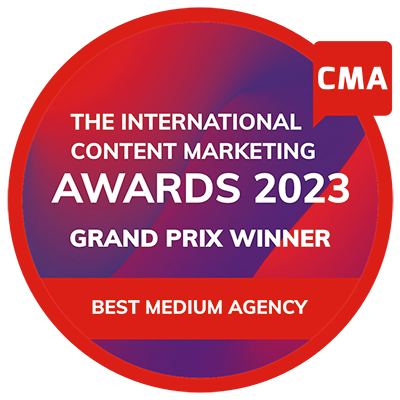
The value of advertising in membership magazines
Niamh Brook,
-
DOWNLOAD
Your Content Marketing Checklist >

-
REQUEST TODAY
A Content Consultation >

When it comes to advertising in membership magazines, the benefits and results can often differ from advertising in traditional media.
In specialist publications, the consumer is an engaged, captive audience able to discover brands and businesses that are more relevant to their more niche interests and tastes. As a result, they welcome advertising as valuable for their information or education. And even better for advertisers, recall is better for printed material than digital.
Subsequently, there’s a great deal of thought that needs to go into any advertising campaign in order to achieve success.
Goals of advertising
Whatever print media we’re evaluating, our objectives often remain the same and are often variations of the following:
- We seek to create awareness
- We want people to try our products
- We want to increase the use of our products
- We’re on the lookout for potential customers
- We want to retain loyal ones
It is our job as marketers to create a unique and effective strategy to not only achieve these goals, but to launch our products and services directly into an accepting target audience’s consciousness. However, the media landscape has never been so vast and potentially confusing.
Consumers are now more likely to feel over saturated with content of various types while brands can be side-lined by different algorithms or easily forgotten in the churn of content and our day-to-day lives. Of course, nothing beats the targeted, cost effective and efficient benefits digital has to offer, however there is still value in traditional media – and particularly, specialist interest media.
At Dialogue, we focus on special interest publications that are typically targeted at member clubs and special interest groups.
What is a special interest publication?
A special interest publication is a highly focused piece of media that caters to a targeted audience of readers, often relating to their passions, interests or memberships. Special interest publications typically provide an authoritative, trusted voice in the space.
These publications offer an effective and direct method of communication to both existing and potential customers, utilising unique and exciting exclusive content to not only entertain and inform the reader, but to also drive them to a point of sale.
Advertising in a specialist magazine
For some print media, the world has moved on. However, the reality is that brand recall is 70% higher on print than digital (True Impact, 2015 as quoted in Forbes): we engage with the medium in a different way.
Meanwhile, advertising in specialised print media offers more opportunities for advertisers than other traditional advertising platforms.
Special interest publications are sure to reach a more committed and passionate audience, meaning that your adverts and campaigns are more likely to be read and re-read on multiple occasions.
For specialist magazines, the consumer is a 'captive' and engaged audience because they bring different expectations to the material - adverts have value in this space.
From our 2020 report Driving Success: The Value of Print to the Luxury Automotive Industry, we can see some examples of how print adds value in this sector. The report data showed that the top 10% and 25% wealth groups discovered new brands and products more through print than any other medium. Meanwhile, rural luxury audiences respond more to stories in print, however urban audiences are more likely to respond to adverts in print.
Many specialist magazines are considered by readers to be collectables or of considerable value, meaning they have a different lifecycle to other media. Typically, they benefit from extended and repeating exposure staying on coffee tables, in public spaces and are passed between friends and families.
Interestingly, Ian Levy, CEO of Burda Brazil and Burda Iberia, home to a number of special interest titles, explained,
“[The] key is, of course, that your audience expects to get the content they love across a multitude of platforms and formats. Think about it in this way: if you are a wine enthusiast and read a wine magazine, your relationship with the topic does not end at the last page of the magazine. You probably want to taste the wines you read about; see how they harmonise with different dishes; learn as much as possible about the wines; purchase wines in a convenient, practical way; and travel to specific wine regions to further pursue your love of wines.”
As Ian explains, utilising specialist print magazines allows marketers to directly communicate with their target audience.
The downsides of social media for membership organisations
For many organisations, social media may be the default and/or the only channel used to attract and build an audience. It has many benefits in terms of attracting consumers, but, even so, there are many other factors that can affect the success of a social-only campaign.
Firstly, apart from TikTok, it has become increasingly hard and time-consuming to build traction using ‘organic’ content alone (ie. content that’s not boosted with revenue within social channels). The sheer competition in this space means that channels now rely on algorithms that prioritise content from friends and family together with fresh, relevant material that the consumer has shown previous interest in.
In addition, with social advertising, while it’s possible to target specialist audiences, often long-term visibility is necessary before a consumer actively considers a brand.
All the while, the pay-to-play nature of the medium means that once a brand’s budget for a social campaign has run out, the campaign simply has to end. Meanwhile, the ephemeral nature of the medium and the increasing sophistication of users also means that it is easy for consumers to ignore your message.
Of course, every medium has a downside, but increasingly organisations need to lean into a variety of tactics to support their acquisition and loyalty approaches.
While print and social both have their downsides, a combination of approaches can work together to have a lasting impact and join the dots for the consumer.
Creating an advertising strategy
Understanding how your target audience discovers you is vital. The ‘user discovery journey’ follows a customer throughout their brand consideration journey across media.
Marketers have always broken this journey down into a sales funnel, but the new McKinsey consumer decision journey makes more sense of the fragmented media landscape we are now in. It still however proposes consumers move through four concise phases as they get to know a brand.
Phase 1 (consideration)
• During phase one, a customer begins to consider an initial selection of brands, based on their previous perception and recent exposure to different brands.
Phase 2 (Active evaluation)
• In phase two, customers begin to evaluate their personal situations and begin removing brands that do not fit in with their personal requirements.
Phase 3 (Purchase)
• At this phase, the customer ultimately chooses the brand for their purchase. After careful consideration, their decision has finally been made and they commit to their purchase.
Phase 4 (Post purchase)
• Now that a customer has made their purchase, they now build their expectations based on their experience which informs their next decision journey.
Specialist print media can’t help customers during every phase of the user discovery journey, but it can play a key part in phases 1 and 4.
Specialist print media can aid a customer through the first phase of the user discovery journey. As a direct method of communication to a niche audience, specialist print media can help to influence a customer’s consideration, especially when it’s backed up with social media.
Specialist print media can also help customers during phase 4 as a print campaign can help to reaffirm a brand’s values within a customer’s mind and could lead to a repurchase in the future.
Take advantage of our FREE content consultation here to talk to us about membership magazines.
Utilising specialist print media
Dialogue has vast experience in specialist print media, both in terms of producing publications but also in terms of media sales.
We work closely with clients to help them achieve the most in this unique medium – our sales team manager, Vicky Moore, offers her thoughts on the value of specialist print publications:
“Print magazines are a luxury allowing you to take time away from your computer, it’s a valuable commodity and huge benefit to member organisations.”
“It’s important to connect any advertising to a specific goal. Be it brand-building, launching a new product or simply reminding your customers you exist. Each approach will need a different and distinct message.“Where possible, sync your print campaign to an outcome such as an instore or online purchase, a visit to a website or a follow on social media. This will allow you to track and evaluate the impact of your campaign. Of course, it’s not always easy to understand what drives a Google search or a digital interaction, but digital is increasingly facilitating its connection with the real world with QR codes which can now be generated simply and cost-effectively.”
In conclusion
Using specialist print media is an important tool in any marketer’s arsenal, allowing you to directly communicate with customers who are engaged in/with a particular membership or interest area.
Utilising the power of specialist print media, marketers can create a direct channel into the lives of their target audience, influence their decision making and create a long-lasting campaign.
Resources
Forbes: Paper Beats Digital in Many Ways According to Neuroscience
McKinsey New Consumer Decision Model
Read more insightful articles
See more from the blogThe future of luxury hospitality – Part 3: Wellness and the quest for meaning
The future of luxury hospitality – Part 2: Purpose and sustainability
The future of luxury hospitality – Part 1: Personalisation and technology
Dialogue shortlisted for 14 International Content Marketing Awards 2025
Proud to be a winner of industry awards, recognised as content marketing experts in print and digital media.












